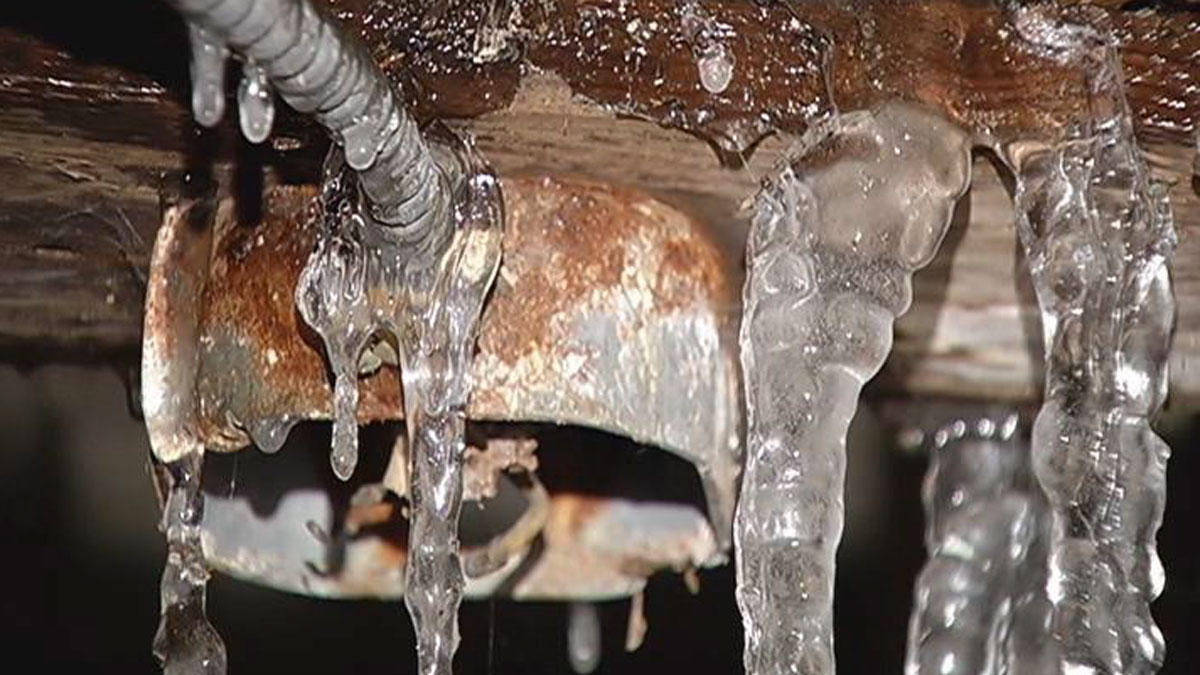Avoiding Frozen Pipes: Effective Strategies for Winter
Avoiding Frozen Pipes: Effective Strategies for Winter
Blog Article
We have noticed the article about How to Prevent Your Pipes From Freezing directly below on the net and felt it made sense to talk about it with you here.

Cold weather can damage your plumbing, especially by freezing pipes. Below's exactly how to avoid it from taking place and what to do if it does.
Introduction
As temperatures decline, the threat of frozen pipes increases, potentially leading to costly repairs and water damages. Recognizing exactly how to prevent icy pipes is critical for house owners in cold climates.
Understanding Frozen Pipelines
What triggers pipes to ice up?
Pipes freeze when subjected to temperatures listed below 32 ° F (0 ° C) for prolonged durations. As water inside the pipes freezes, it broadens, taxing the pipeline wall surfaces and potentially causing them to rupture.
Dangers and problems
Frozen pipes can lead to water disturbances, building damage, and pricey repair work. Burst pipelines can flooding homes and create substantial architectural damages.
Indicators of Frozen Water Lines
Determining icy pipelines early can prevent them from bursting.
Exactly how to determine frozen pipelines
Look for decreased water flow from taps, uncommon odors or noises from pipes, and visible frost on revealed pipes.
Prevention Tips
Insulating prone pipelines
Cover pipes in insulation sleeves or utilize warmth tape to shield them from freezing temperature levels. Focus on pipes in unheated or outside areas of the home.
Heating techniques
Keep interior rooms adequately heated, specifically locations with pipes. Open up cupboard doors to allow warm air to circulate around pipes under sinks.
Safeguarding Outside Plumbing
Yard hoses and exterior taps
Separate and drain yard tubes before winter months. Set up frost-proof faucets or cover outside taps with shielded caps.
What to Do If Your Pipelines Freeze
Immediate actions to take
If you suspect icy pipes, maintain taps open up to alleviate pressure as the ice thaws. Use a hairdryer or towels soaked in warm water to thaw pipelines slowly.
Long-Term Solutions
Architectural adjustments
Take into consideration rerouting pipelines far from exterior wall surfaces or unheated locations. Include additional insulation to attics, basements, and crawl spaces.
Updating insulation
Invest in premium insulation for pipelines, attic rooms, and wall surfaces. Correct insulation assists maintain regular temperatures and lowers the risk of frozen pipes.
Final thought
Protecting against frozen pipelines calls for positive measures and quick reactions. By recognizing the causes, signs, and preventive measures, home owners can safeguard their pipes during cold weather.
6 Proven Ways to Prevent Frozen Pipes and Protect Your Home
Disconnect and Drain Garden Hoses
Before winter arrives, start by disconnecting your garden hoses and draining any remaining water. Close the shut-off valves that supply outdoor hose bibs and leave the outdoor faucet open to allow any residual water to drain. For extra protection, consider using faucet covers throughout the colder months. It’s also important to drain water from any sprinkler supply lines following the manufacturer’s directions.
Insulate Exposed Pipes
Insulating your pipes is an effective way to prevent freezing. Pipe insulation is readily available at home improvement stores and is relatively inexpensive. Pay close attention to pipes in unheated areas such as the attic, basement, crawl spaces, or garage. Apply foam insulation generously to create a buffer against the cold. You can also wrap your pipes in heat tape or thermostat-controlled heat cables for added warmth.
Seal Air Leaks
Inspect your home for any cracks or openings that could let in cold air. Seal any holes around the piping in interior or exterior walls, as well as the sill plates where your home rests on its foundation. Additionally, make sure to keep your garage door closed unless you’re entering or exiting. Leaving it open creates a significant air leak that can lead to frozen pipes.
Allow Warm Air Circulation
During cold snaps, it’s essential to allow warm air to circulate evenly throughout your home. Leave interior doors ajar to promote better airflow. Open kitchen and bathroom cabinets to help distribute heat consistently around the rooms. If you have small children or pets, be sure to remove any household chemicals or potentially harmful cleaners from open cabinets for safety.
Let Faucets Drip
A small trickle of water can make a big difference in preventing ice formation inside your pipes. When temperatures drop significantly, start a drip of water from all faucets served by exposed pipes. This continuous flow helps prevent the water from freezing. Additionally, running a few faucets slightly can relieve pressure inside the pipes, reducing the chances of a rupture if the water inside does freeze.
https://choateshvac.com/6-proven-ways-to-prevent-frozen-pipes-and-protect-your-home/

We hope you enjoyed reading our piece on How to Prevent Your Pipes From Freezing. Thank you so much for spending some time to browse our content. Feel free to take a moment to distribute this blog if you enjoyed it. We value your readership.
Call Today Report this page